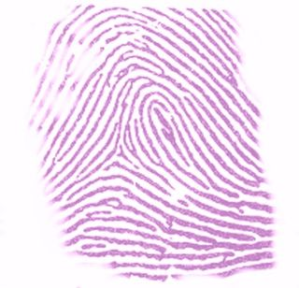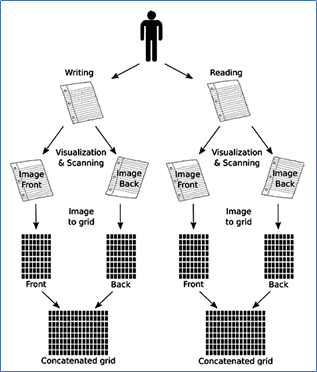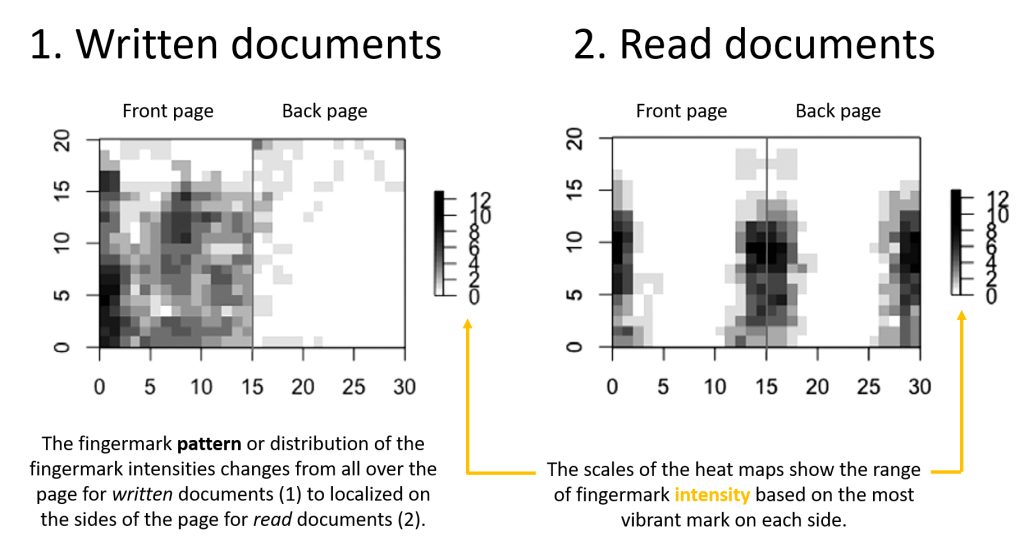Source: Pinterest
Dutch forensic scientists use mathematical modeling and fingerprint location to tell whether someone is an unwitting victim or sinister perpetrator.
Questioned documents, aka, forensic document analysis has played a vital role in the field of forensic science. While the advent of new technology spurred many criminals to switch to digitally generated documents (and gave rise to computer forensics), handwritten document analysis remains critical for cases to connect suspects to the crime scene or criminal acts by establishing authorship.
Analysts review handwritten documents for counterfeit and fraud, as well as suspected terrorism, suicides and illegal drug manufacturing. Terrorists may revert to handwritten documents as opposed to digitally generated documents to avoid tracking. In suicide cases, analysts evaluate suicide notes to determine authenticity of authorship. Handwritten notes in drug manufacturing cases, such as a handwritten recipe to make illicit substances, connect a suspect to the creation of a substance.
While many of the methodologies used by the field have not changed for many years, recent research out of Amsterdam University of Applied Sciences expanded the ways a written document can be analyzed by looking at fingermark location. The authors de Ronde et al. wondered if combining a mathematical modeling system with traditional analysis methods could tell the difference between someone reading or writing a document based on their fingermark location. Though seemingly inconsequential, this difference may be crucial to verify reported case details and suspect testimony. For example, in some cases of intimate partner homicide, a perpetrator will forge a suicide note to gain their partner’s assets. By analyzing their fingermark location, the program could verify if the perpetrator truly read (or actually wrote) the suicide note.

Researchers took advantage of an already constructed mathematical program and applied it to fingermark examination on documents. A mathematical model, named Lexie in this case, is the conversion of natural phenomena like fingerprints into a numerical representation via coding. One hundred and twenty four participants read a printed letter and copied a prepared letter. The scientists then made their latent or invisible prints purple with ninhydrin (Fig. 1), scanned the front and back sides, and uploaded the documents to Lexie.
The mathematical program Lexie overlays a grid document and designating the boxes with fingermarks with 1 and empty boxes with 0 (Fig. 2). Additional computer packages were used for the implementation of the analyses that calculated similarity and distance measurements between grids that the classification model was based on. Heat maps, colored graphical representations, were created using the fingermark distribution for all grids in a particular scenario. Darker areas on a heat map show larger quantities of fingermarks and lighter areas show smaller quantities.

The researchers noticed distinct fingerprint patterns using this model between reading and writing activities. For reading, the fingermarks were centralized to the middle edge of both sides of letter for both the front and back. For writing, the pattern differed based on the length of the text for right-handed individuals. The fingermark placement for regular sized statements [ie. ½ page] was concentrated within the top half of page, whereas fingermark were widely distributed about the front page with full-length statements (Fig. 3).

Combining this knowledge with a training set for the program to “practice” on, the authors taught the model how to analyze the fingermarks and then gave it the “real” samples to test out how their program did on new information. The classification model successfully matched 98% of the right-handed individuals (righties) and 100% of the left-handed individuals (lefties) fingermarks to their reading or writing activity. Interestingly, there was no difference in the fingermark placement between the lefties and righties for reading, but significant difference for writing. The righties’ fingermarks scattered the top and left sides of the paper, while the lefties’ prints dotted the entire front page.
Unfortunately, when analyzing texts written on smaller than average paper (i.e. about half the size of A4 paper), the accuracy of the matching activity dropped to below 65%. The program could still identify read letters, just not written ones. The authors de Ronde et al. hypothesized that folding the page interfered with their analysis, as this action caused fingermarks to be placed on the back side (Fig. 4). By considering only the front side of the letters, their accuracy jumped to 75.6%, but the program still incorrectly matched 11 written letters to a reading activity. Even re-training the model with a practice set that included the smaller paper only improved the accuracy by 3%.

The scientists concluded that the classification model accurately distinguished between reading and writing based on fingermark location, regardless of handedness or text length. In the case of the non-standard page size, researchers found that even after calibration, their accuracy remained below 80%. However, the overall accuracy of the mathematical model demonstrated that fingermark location provides insight into the type of activity performed. While their results warrant further tweaking, this new method could reveal if that person truly received a ransom note or was the actual author.
| Title | A study into evaluating the location of fingermarks on letters given activity level propositions |
| Authors | Anouk de Ronde, Marja van Aken, Christianne J. de Poot, Marcel de Puit |
| Journal | Forensic Science International |
| Publisher | Elsevier B.V. |
| Year | 2020 |
| Link | https://doi.org/10.1016/j.forsciint.2020.110443 |
